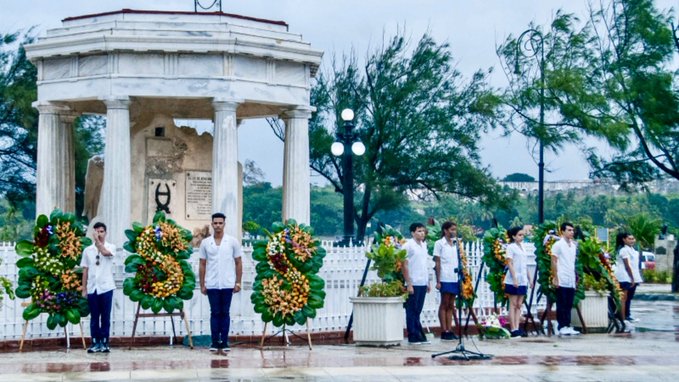After a brief rally of remembrance, marched from the emblematic steps of the University of Havana to the monument that commemorates the students unjustly executed.
Other top figures from the Government, the Communist Party, the Union of Young Communists of Cuba (UJC), the Federation of University Students (FEU), representatives of mass organizations and civil society also paid tribute.
In statements to Prensa Latina, the first secretary of the UJC, Aylin Alvarez, stressed that the criminal shooting marks Cuban and university youth.
“That is why we are marching here on behalf of all Cuba, in addition to the activities taking place in other provinces,” she said.
In the opinion of the leader, the youth is protagonist in the main scenarios, not only in production, in the economic, also in everything related to remember historical events like this.
The national vice president of the Federation of University Students, Daniel Madina Fernández, commented to Prensa Latina that young people are in a constant debate to defend history.
“After such a long time without being able to congregate like this today, it is very significant to do this tribute march and also defend the great work of the Revolution,” he said.
On November 23, 1871, a group of first-year medicine students were waiting for their professor in the anatomical amphitheater next to the Espada Cemetery in Havana.
According to historical research, the young people dispersed around the cemetery, some of them rode around in wheelbarrow, another one plucked a flower and the rest played with each other. Subsequently, the Spanish colonial authorities accused them, without any proof, of desecrating the tomb of Spanish journalist Gonzalo Castañón.
This occurred in the midst of tense historical times due to the increasing number of defeats the Spanish army was suffering at the first war of independence in the island that had begun in 1868 in the eastern Cuba.
The first War Council acquitted the students underlining their innocence; however, due to the pressure from the colonial rule, the Spanish Volunteer Corps of Havana organized a second trial decided to sentence the young men to death as an examplary punishment.
On November 27, the students were shot, another group was sentenced to prison and then sent to exile.
mh/mem/idm










